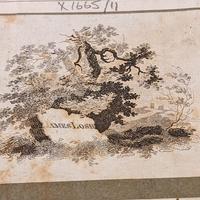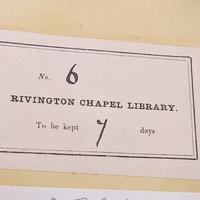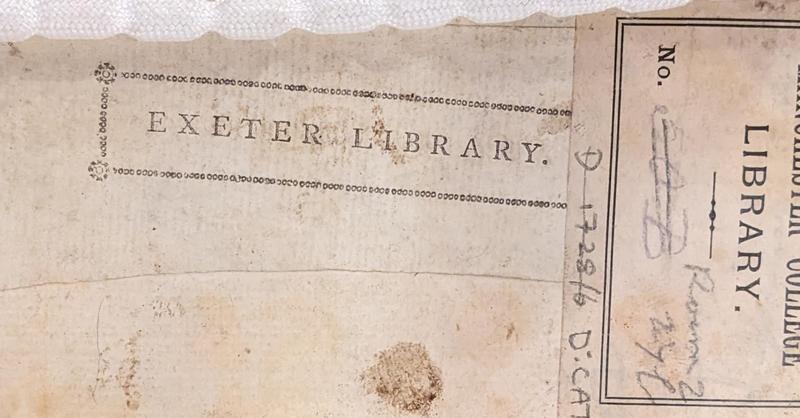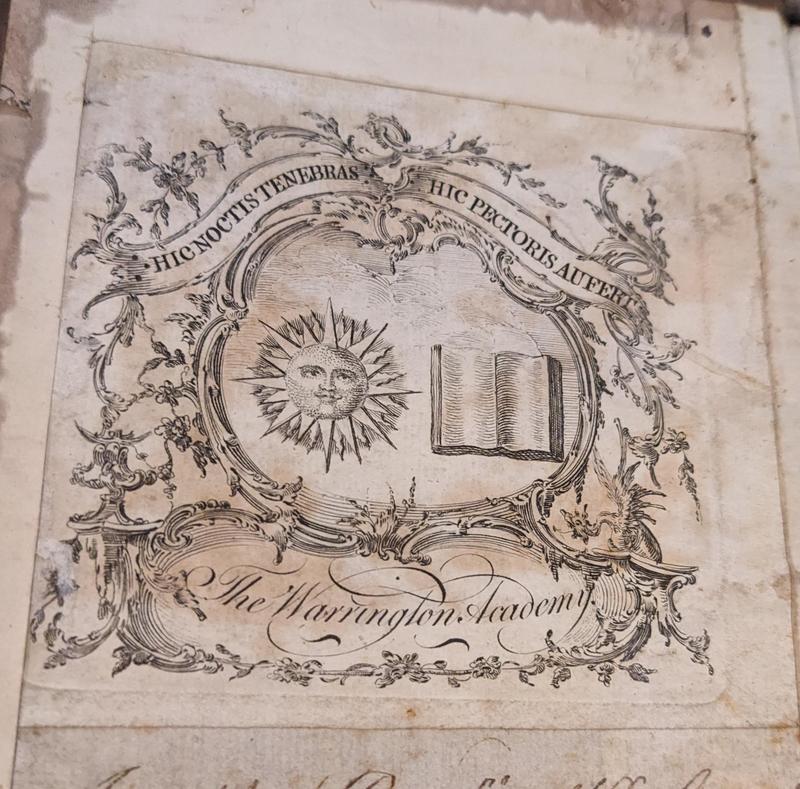A selection of books is now on display in the Library, with each item showing a noteworthy or unusual bookplate. The material has been chosen to illustrate the broad range of bookplates we have and clearly shows how varied this type of label can be. Some of the plates on display are simple and functional, displaying only the most essential information. Examples of this type of plate are books belonging to various chapels.

Personal bookplate for James Arlosh

An example of a Chapel bookplate
This type of label normally lists only the name of the church / chapel and rarely includes any decorative marks. Personal plates, on the other hand, do tend to be more ornate and are often embellished with pictures or borders / scrolls. Sophie Floate, our wonderful and expert Antiquarian Cataloguer, will post more about the fascinating history of bookplates in the coming weeks.
The contrasting style of bookplates could not be more pronounced than those used by Exeter Academy and Warrington Academy. Both institutions were dissenting academies, founded to educate Nonconformists excluded from Oxford and Cambridge due to religious tests. They both operated at a similar time (mid-18th century) and both were funded through subscriptions, fees and donations.
Exeter Academy had various incarnations over the years, and we cannot be certain which version of the Academy introduced the bookplate. The second Exeter Academy closed in 1772, and its Library was lent to Hackney New College in London. It may be that it was at this point that the plates were attached to the books so that it would be easy to identify which were Exeter books. An Academy was re-established in Exeter in 1799 and the Library was returned from London. Unfortunately, the academy lasted only a short period and shut in 1805. The Library remained in the city and was not used, until it was sent to Manchester New College in 1813. The bookplate itself is very simple with the words EXETER LIBRARY contained within a simple decorated boarder.

Exeter Academy bookplate
Warrington Academy (1757-1786) was one of the leading dissenting academies in the North of England in the eighteenth century. Like Exeter, it had been set up to help educate dissenters unable to attend university, as they did not conform to the Church of England. The Academy was successful for some time and attracted influential tutors, including Joseph Priestly and John Seddon. Unfortunately, a reduction in student numbers and bad behaviour forced the Academy to close in 1786. The assets of Warrington were shared by two other academies, Hoxton Academy in London who received the scientific equipment and Manchester Academy (now HMC) who received the Library.
The bookplate shows a shining sun and an open book with the motto ‘hic noctis tenebras hic pectoris aufert’. Rosemary Dixon in her chapter on ‘Presbyterian/Unitarian Libraries’ says of the bookplate that it sends a clear message about the importance of a good library: while the sun chases away the literal darkness, the book dispels the shades of spiritual ignorance. The bookplate is fairly rare in Warrington Academy Library books, and it is not known whether the plate was only used for short time or was only used for particular books.

Warrington Academy bookplate